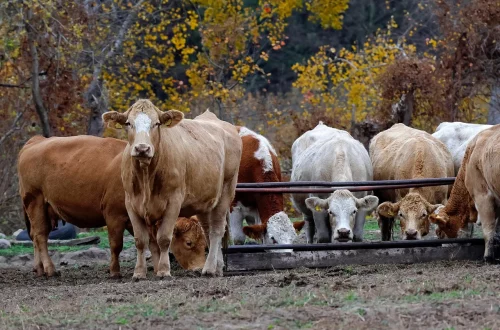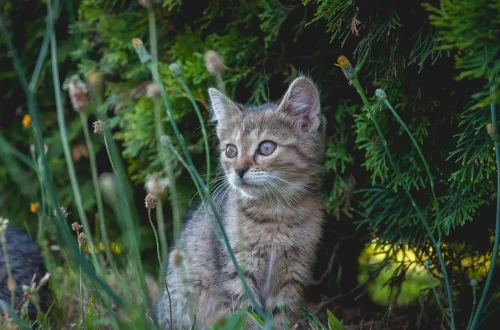
The Best Grass for Dogs: A Guide to Pet-Friendly Turf Choices
Creating a suitable outdoor environment for dogs involves careful consideration of several factors, particularly when it comes to choosing the right type of grass. Dogs are naturally active and curious, often spending hours exploring their surroundings, which means that the grass they interact with should be durable, safe, and comfortable. Additionally, pet owners must think about the maintenance and care required for the lawn, as well as the impact of different grass types on both the dogs and the environment.
Many dog owners are unaware that not all types of grass are equally suitable for their furry friends. Some varieties can cause allergies, skin irritations, or even digestive issues if ingested. Therefore, selecting the best grass for dogs involves understanding not only the aesthetic qualities of the turf but also its resilience to wear and tear, as well as its safety for pets. Moreover, the climate and soil conditions in your area can significantly influence which grass type will thrive and provide a safe playground for your dog.
In the quest for the ideal grass, pet owners should also consider factors such as drought resistance, pest resistance, and the overall ecological impact of their turf choices. With so many options available, it’s essential to be informed and make decisions that contribute to the well-being of both pets and the environment.
Choosing the Right Grass for Your Dog’s Needs
When it comes to selecting the right grass for your canine companion, the first step is to assess your dog’s specific needs and lifestyle. For instance, high-energy breeds that love to run and play may require a more durable grass type that can withstand heavy foot traffic. On the other hand, older or less active dogs may do fine with softer, more delicate grasses.
One popular choice among dog owners is Kentucky Bluegrass, known for its lush appearance and resilience. This grass type is ideal for cooler climates and can handle moderate foot traffic, making it suitable for families with dogs that enjoy outdoor play. Additionally, Kentucky Bluegrass is relatively low-maintenance, requiring regular mowing and watering to stay healthy.
Another great option is Perennial Ryegrass, which germinates quickly and establishes itself rapidly. This grass is particularly well-suited for transitional zones and can tolerate a fair amount of foot traffic. Its fine texture makes it gentle on your pet’s paws, and it also has a high drought tolerance, which is beneficial in regions with varying weather conditions.
For pet owners in warmer climates, Bermuda grass is often recommended. This warm-season grass is incredibly durable and can withstand heavy use, making it perfect for active dogs. Bermuda grass thrives in sunny environments and can handle the wear and tear of playful pups, but it may require more maintenance in terms of watering and fertilization during the hotter months.
Ultimately, the best grass for your dog will depend on your local climate, the level of activity your dog engages in, and your personal maintenance preferences. By considering these factors, you can create a safe and enjoyable outdoor space for your furry friend.
Common Grass Types and Their Benefits
When selecting grass for dog owners, it’s essential to understand the various types available and their unique benefits. Each grass type has its characteristics that can either enhance or detract from your pet’s outdoor experience.
Fescue is another popular choice, particularly Tall Fescue, known for its adaptability and resilience. This grass type has a deep root system, which allows it to thrive in drought conditions. Its coarse texture is also durable against wear, making it an excellent option for dogs that love to dig or run. Moreover, Tall Fescue is less likely to suffer from disease, reducing the need for chemical treatments that could harm your pet.
Zoysia grass is a warm-season grass that is also gaining popularity among dog owners. Known for its thick and carpet-like texture, Zoysia is exceptionally tolerant of heat and drought. This grass type establishes a dense mat that can withstand heavy foot traffic, making it ideal for dogs that love to romp around the yard. While Zoysia may take longer to establish initially, its low maintenance once established makes it an appealing option.
Another grass type worth considering is Buffalograss, especially for those in arid regions. This native grass requires minimal water and is highly drought-resistant. Buffalograss can handle moderate foot traffic but may not be as lush as other types. However, it is an environmentally friendly option that reduces water consumption, making it a sustainable choice for dog owners concerned about their ecological footprint.
In conclusion, understanding the characteristics and benefits of various grass types can help you make informed decisions. Each type has unique strengths, and by evaluating your dog’s needs and your local conditions, you can choose a grass that not only looks great but also supports your pet’s lifestyle.
Maintaining a Pet-Friendly Lawn
Once you have chosen the right grass for your dog, the next step is to ensure proper maintenance to keep the lawn healthy and safe. Regular care is crucial for maintaining both the aesthetic appeal of the grass and the well-being of your pets.
One of the first aspects of lawn maintenance is mowing. Keeping your grass at the right height not only enhances its appearance but also promotes healthy growth. Different grass types have specific height requirements, so it’s essential to learn about the ideal mowing height for your chosen grass. Mowing too short can stress the grass, leading to patches and making it susceptible to weeds, which could harm your dog.
Watering is another critical maintenance task. The frequency of watering will depend on the grass type, soil conditions, and climate. For most grasses, deep and infrequent watering is preferred to encourage deep root growth. This practice not only keeps your lawn healthy but also ensures it can withstand the wear and tear of playful paws.
Fertilization is also necessary for maintaining a vibrant lawn. Using pet-safe fertilizers can promote lush growth while ensuring your dog’s safety. Organic options are available that enhance soil health without the risk of chemical exposure. Additionally, being mindful of the timing of fertilization can prevent burning the grass and reduce the likelihood of harmful runoff.
Lastly, monitoring for pests and diseases is essential. Regularly inspecting your lawn for signs of trouble can help you address issues before they escalate. If you notice any unusual patches or signs of distress in the grass, consulting with a local lawn care expert can provide you with the necessary guidance to keep your lawn healthy and pet-friendly.
In summary, maintaining a pet-friendly lawn involves consistent care and attention. By following proper mowing, watering, and fertilization practices, you can create a safe and enjoyable environment for your dog.
Creating a Safe Outdoor Space for Your Dog
Creating a dog-friendly outdoor space goes beyond just selecting the right grass. It involves considering the overall environment to ensure your pet’s safety and enjoyment. This includes landscaping, fencing, and eliminating potential hazards.
First and foremost, ensure that your yard is securely fenced. This not only keeps your dog contained but also protects them from potential dangers outside. Fencing should be tall enough to prevent jumping and deep enough to deter digging. Additionally, consider the materials used; wooden fences may require maintenance, while vinyl fences offer durability and low upkeep.
Landscaping choices are equally important. While flowers and shrubs can enhance the aesthetic appeal of your yard, it’s essential to choose pet-safe plants. Some common plants, such as lilies and azaleas, can be toxic to dogs. Researching and selecting dog-friendly landscaping options will safeguard your pet while enhancing your outdoor space.
Another consideration is providing shaded areas for your dog to cool off during hot weather. Installing a doghouse or providing shaded spots under trees can help keep your pet comfortable and protected from the sun’s harmful rays.
Creating designated play areas can also enhance your dog’s outdoor experience. Consider adding agility equipment, a splash pad, or even a sandbox for digging. These features can provide mental and physical stimulation, keeping your pet engaged and happy.
Lastly, always keep an eye on your dog while they are outside. Regular supervision can help you quickly address any potential issues, whether it’s ensuring they stay safe from hazards or preventing them from consuming harmful plants.
In conclusion, creating a safe outdoor space for your dog involves careful planning and consideration. By focusing on secure fencing, pet-friendly landscaping, shaded areas, and engaging play spaces, you can ensure a safe and enjoyable environment for your furry friend.
In summary, choosing the best grass for dogs is a multifaceted decision that requires thoughtful consideration of various factors. This article serves as a guide to help pet owners make informed choices that prioritize their dog’s health and happiness while maintaining a beautiful lawn.
Please note that this article is not a substitute for professional veterinary advice. If you have any concerns about your pet’s health or well-being, please consult with a veterinarian.




